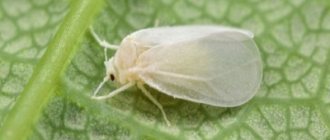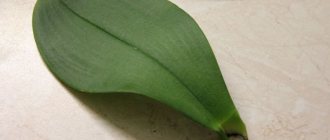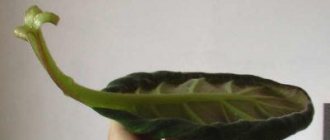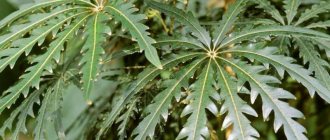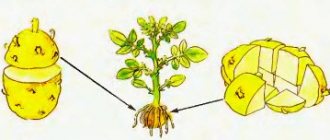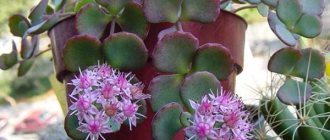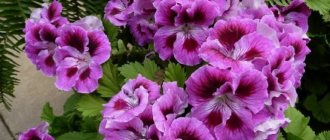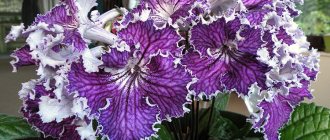This article describes the structure of the reproductive organ of a flower - the pistil and stamen. You will learn how this process occurs in plants.
Flowers are truly unique plants. They not only attract attention with their appearance, but are also a source of useful substances. Everything about them is unusual, including their method of reproduction. From school biology lessons, you can remember the names of the main “genital organs” of plants – pistil and stamen. But what is it, and what functions do these parts of plant crops perform?
Read an article on biology riddles . The information contained in it will help you prepare for the quiz lesson on this subject.
If you need to help your child complete homework on this topic, then this article will help you. It contains a lot of useful information that will help you remember the material you covered. If the student completes the task himself, then the article will help to find the correct answer to the question and formulate a thought. Read on.
Flower - pistil and stamen: the main parts in the reproductive organs
A typical inflorescence of a flower
The upper flowering part of the plant, which we are accustomed to admiring, is nothing more than the reproductive organ of plants. A flower with a pistil and stamen is the reproductive system of representatives of the world of flora, its main parts.
It grows on shoots, of which there may be several on plants. This form of flower formation is called an inflorescence. They are divided into 2 groups - simple and complex.
- Simple inflorescences . On their surface are all the flowers located on the main axis of the shoot.
- Complex inflorescences. They are characterized by the presence not of individual flowers, but of several small branched inflorescences on the main axis of the shoot. They reflect the basic structure of the flower.
Typically, inflorescences are formed by small flowers, while large flowers grow separately. But it is the small flowers, collected together, that form the structural inflorescence and give the strong aroma of nectar. This smell attracts insects, which subsequently transfer pollen from one crop to another, pollinating it.
Worth knowing: More grains and fruits are formed in inflorescences than in individual flowers. Thanks to this, the reproductive capacity of crops increases, which makes their reproduction process more efficient and intensive.
Some inflorescences look like one large flower. This is the result of a long process of evolution. A similar phenomenon can be observed in sunflower, chamomile, viburnum, cornflower and many other plants. It is the large and bright petals that attract the attention of insects that collect nectar, so they are able to pollinate several plants at once in one approach.
The perianth consists of stamens, pistils, corolla, calyx: structural features of the flower, pattern
The perianth consists of stamens, pistils, corolla, calyx.
Flowers have their own structural features, which are in many ways the same and different at the same time. But absolutely all plants have the following structural components - structural features of the flower (above in the figure):
- Pedicel . This name was given to the last node located on the stem of the plant.
- Receptacle . This is the place where the flower opens. It is a special organ like a frame. It is on this that the entire basic structure of the flower plant is located.
- Around the receptacle is the perianth . It performs, first of all, protective functions. In other words, it protects the organs of the reproductive system of the crop - the pistil and stamen.
Interesting: The perianth attracts insects to the flower. Some perianths are capable of forming corollas. This is the name given to the collection of petals on the inside of a flower. They have a bright and rich color, and also serve to attract insects that collect pollen.
And all this complex structure of the flower is intended for only one thing - to perform the reproductive function. The stamen, pistil, corollas and calyx in fruit and berry plants play an even more important role. They are responsible for the formation of the ovary, from which over time a full-fledged fruit is formed.
Structure and functions of the stamen: features, anther, photo
Structure and functions of the stamen
As mentioned above, the stamen is formed in two parts - the anther and the filament. Features of the structure and function of the stamen (look at the photo above):
- The anther has two more parts.
- They are specific sacs where pollen accumulates. And it is contained in special nests that are attached to the anther sacs.
- Each flower may have one or more stamens. And in some plant varieties, the number of male sections of the reproductive system can even reach several thousand.
Interesting : The collection of stamens has a scientific name - androecium. It can be circular or spiral - it all depends on how the parts of the reproductive section are located.
In some cases, the stamens are even able to grow together - partially or completely. For example, in pumpkin crops the fusion of the staminate parts is predominantly total. Also, sometimes the pistil fuses with the stamen, forming a new, special organ - the column. A similar process can be observed when growing orchids.
Tradescantia riverine
The plant with creeping stems reaches a height of 23 cm. The leaves are rich green.
It is recommended to place Tradescantia on the wall opposite the window in a hanging pot or on a shelf. This way the stems will flow beautifully and the greenery will receive enough light.
Watering is carried out as the soil dries, this will ensure the juiciness and beauty of the leaves. The flower feels best in slightly acidic or neutral soil with perlite. At the same time, it is rarely possible to admire Tradescantia buds indoors.
The plant can be replanted all year round. Anti-aging pruning of stems is carried out every 2-3 years. You can also simply pinch out long shoots. At home, Tradescantia is often propagated by cuttings. They quickly take root in a 1:1 mixture of sand and peat or in clean water.
What is the structure of the pistil: features, role of the style and ovary, photo
The structure of the pistil: features, the role of the style and the ovary.
The formation of the pistil occurs when one or more carpels grow together. Its structure is simple (pictured above). It contains seed primordia and a special tract that contains ripening pollen until the moment of fertilization.
The pestle has its own structure. It is formed in three parts, each of which performs its assigned functions. Below you will find the features of this part of the plant, as well as the role of the style and ovary. The main structural units of the female reproductive organ of a plant:
- Ovary . It is the base of the pistil and is located in its lower part. After the fertilization process, further maturation and development of seeds occurs in this area. more about what an ovary is in a plant in another article on our website.
- Column . This is the sterile part of the pistil, which originates from the ovary and gradually flows into the stigma. Its main role is frame, supporting. The columns of the pistils are divided into open, closed and semi-closed. It all depends on how pronounced the process of fusion of the stylodium is.
- Stigma . This is a separate organ whose main task is to produce pollen. To put it simply, he catches it and delivers it to the pestle.
This is how the female organ of the reproductive system of a flower, the pistil, works. It is not difficult to distinguish it from a stamen. The pistil is located at the very bottom, at the base of the flower petals, while the stamens can be located on the sides, or located at the very top, at the edges of the petals.
Several types of leaf cuttings
First method: part of the leaf blade of the mother plant
In this way, you can propagate, for example, sansevieria .
Cut mature healthy leaves into fragments 5 cm long and plant each cutting with the lower end in the soil. Before planting, treat the cuttings with a fungicide and dry for a day. Cuttings in a row may touch each other. Keep the cuttings in bright but diffused light and a temperature of about +21 C, keep the soil slightly moist, and do not cover the cuttings with polyethylene. Roots and new shoots should appear in 6-8 weeks.
Propagation by leaf cuttings of Sansevieria
Only species sansevieria can be propagated by leaf cuttings; varietal ones, alas, will not repeat the characteristics of the mother plant. If the variety is the result of crossing two different species or varieties, unfortunately, it will not be possible to get children that will exactly copy the mother plant when propagated by leaf cuttings. Variegated Sansevieria, as a rule, also do not propagate by leaf cuttings; new plants will be either completely green or chlorophyll-free.
Gasteria have a thick upper layer of epidermis and a waxy coating, which perfectly protect the internal watery tissues of the leaf from drying out; before planting, the cut must be dried for at least a week, otherwise rotting after planting in the ground is almost inevitable. Plant the cuttings in small pots filled with clean gravel or lechuza. Water regularly as gravel or mineral soil dries out almost instantly. The plant forms slowly - a new one will appear no earlier than in 3-6 months.
- To learn how to propagate gasteria with a daughter rosette, see the master class here >>>>
- Propagation of gasteria by leaf cuttings is described in detail in this master class >>>>>>>>
Attention! The rule of drying the cut before planting is true for all succulents; the fleshier the leaf, the longer it needs to be dried before planting.
Second method: whole leaf with petiole
In many succulent plants, the buds located in the leaf axils are more firmly attached to the leaves than to the stems. Usually they are not visible, but they are the ones who give rise to a new life.
Sometimes you hear that leaves take root but don’t produce babies, that it’s a lottery - if you’re lucky, there will be a baby, if you’re unlucky, there won’t be. No, this is not a lottery, this is a leaf cutting taken correctly or incorrectly. Your task is to remove this leaf so that the renewal bud, from which the future plant will develop, does not remain on the stem, but separates along with the leaf.
The concept of monoecious and dioecious flowers: what is the formula of the pistil and stamen, an example of reproduction?
Cucumber flowers are monoecious.
It is worth noting that different plants may have different pistil and stamen formulas. Both staminate and pistillate flowers are often located on the same plant. Thanks to this, the crop becomes capable of self-pollination and does not need outside help. Representatives of the world of flora, which are characterized by this quality, are called monoecious . Examples of this group of crops include pumpkin and cucumbers .
But there is another category of plants, which is called dioecious . In this case, female and male individuals are located on different specimens of plant crops. Therefore, to ensure the pollination process, the participation of insects is necessary. Widely known representatives of this group are stinging nettle, willow, and aspen.
There is also the concept of asexual plants. We are talking about them when there are no organs of sexual reproduction on the surface of the culture.
The concept of monoecious and dioecious flowers
Below you will find an example of the propagation of dioecious plants. If everything is simple and clear with monoecious plant crops, then the peculiarities of reproduction of dioecious specimens cause some bewilderment. In fact, there is nothing supernatural in this process, but this process is really interesting. Let's look at a small example of how pollination occurs in dioecious plants.
Poplar is a dioecious plant
- Everyone knows a tree called poplar. This is also a typical representative of the category of dioecious plants.
- In the spring, male poplars begin to scatter pollen, and in the summer, female specimens of the plant spread white fluff. It is in this unusual and interesting way that this tree reproduces.
- Poplar fluff contains seeds that do not scatter and are not lost precisely thanks to the down threads. They are firmly attached to them and can easily fly away from the parent tree over considerable distances.
- The same unusual and interesting method of propagation is typical for dandelions.
Since dioecious plants require the participation of insects in the pollination process, the yield of fruit and berry crops and vegetables largely depends on how active wasps, bees, hornets , etc. The higher their activity, the better the harvest. And, therefore, the lower it is, the less chance there is for intensive and rich fruiting of individual garden and vegetable crops.
Pineapple cuttings indoors
You can try to grow a pineapple from the apical pappus after using the inflorescence for food, although the risk of failure may be high. The top of a pineapple with leaves is used as a cutting...
When purchasing, you should choose a fresh and beautiful fruit with healthy foliage, without signs of drying out or damage. The apical bud must be intact. It is advisable to buy for propagation in the warm season, since in the cold season the leaves freeze slightly, since they need a temperature of at least 18 degrees, and temperature damage to the leaves is not immediately detected.
Cut the crown as low as possible, approximately 2 cm below the leaves, otherwise you may lose a significant portion of the leaves. Sprinkle the cut with crushed coal and leave for 1-2 days to dry so that it is not too wet and does not begin to rot. Plant the apical cuttings in a mixture for cuttings: peat and sand in equal quantities, that is, place the cut part on the surface of the substrate and lightly press it. Water and cover the pot with a transparent film that will be supported by the arch. This can create a warm and humid atmosphere. Place the pot under a light source. The temperature should be humid and high, approximately 24-26 degrees. For prevention, you can spray the leaves before planting with 2% foundationazole, repeating the treatment every 2 weeks. After a month, the plant should take root, of course, if everything is done correctly. It is necessary to carefully reduce humidity by increasing ventilation. The rooted topsoil can be planted in a suitable mixture of leaf, humus and turf soil with sand. Water only with warm water and do not let the air temperature drop below 18 degrees. The lump of earth should not dry out between waterings, but excess moisture is also harmful. From spring to August, they begin to feed every two weeks and the temperature should be about 25 degrees. You can use mineral and organic fertilizers.
You may also find the following materials useful:
- Enhanced nutrition of roses in spring for lush flowering
- What garden flowers can be safely planted in the full sun?
- Rules for preparing gladioli for planting in spring
- What medicines from your home medicine cabinet can cure plants?
- Petunia - selection of seeds, planting, picking, features of care, formation and placement
Flower biorhythms - pistil and stamen: useful information about reproduction
Biorhythms of a flower
A flower is a living organism that also has its own biorhythms. It tends to be awake and in a state of sleep - just like humans, animals, etc. You can understand what phase a plant is in at the moment by the state of its petals. They close and open depending on the time of day. In addition, the type of flower crop also affects biorhythms.
A simple example of a flower clock:
- Chicory and salsify . These plants open at 3-4 o'clock in the morning and remain in this position almost until the evening.
- Poppies and rose hips wake up at 5 o'clock in the morning .
- Periwinkle, dandelion, bluebell . These plants begin to open at about 6 am .
- Marigolds and bindweeds . The period of their awakening and activity falls at 8 o'clock in the morning and lasts until the evening.
- Marigolds . These flowers open at 9 o'clock in the morning .
Starting from lunch until evening, the flowers gradually begin to wilt. This means that they close and enter the sleep phase. The specific time for the petals to completely close depends on the type of flower crop. For example:
- The wild carnation closes at about 1 am.
- The time when cactus flowers enter the sleep phase is 2 am.
- Dandelion begins to close at 3 am.
- The Greek woman closes her petals in the morning - at approximately 4 o'clock.
- The white water lily closes at 5 a.m., etc.
Each plant has its own special biorhythms. And they most directly influence the reproduction of culture. Here is some more interesting information about reproduction, pistils and stamens:
- Based on the above, in the world of flora there are girl plants and boy plants. They are bisexual and dioecious.
- In the first case, flowers are characterized by the process of self-pollination.
- But for the reproduction of dioecious crops, the help of insects is needed - wasps, bees, etc. They transfer male gametes to the female plant.
- This is the only way to ensure the pollination process for further plant propagation.
Now you know the structure of a flower and how plants reproduce. To consolidate the material, try using the pictures above to tell yourself about the process of plant propagation. Also watch the video below which goes into detail about this process.
